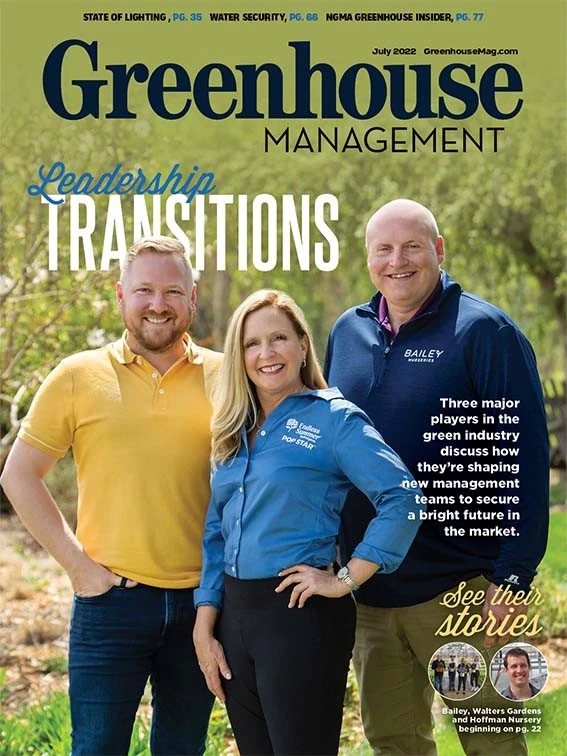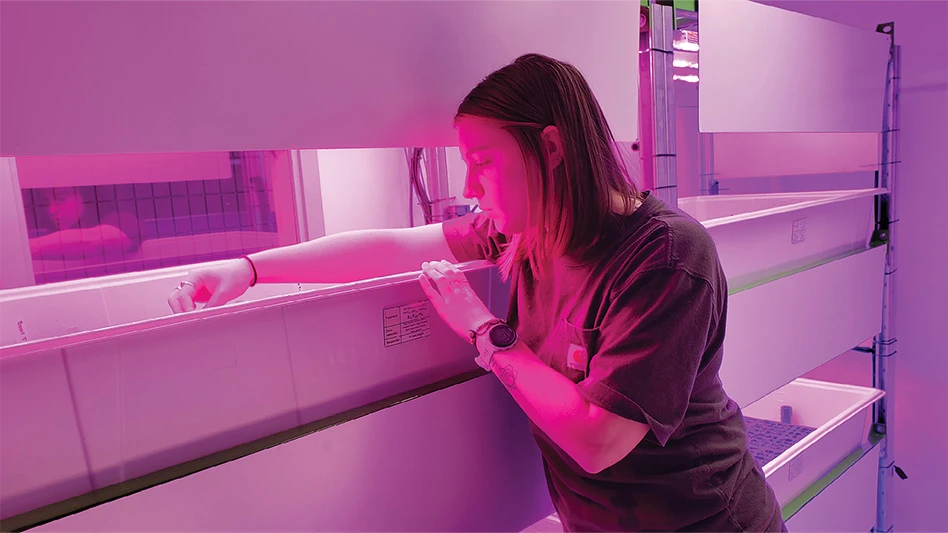
Greenhouse Management: How have you seen the market for natives evolve over the last few years?
Clark DeLong: I think it’s still kind of in the early stage. But I’m seeing a lot of growth, a lot more opportunity as far as plant material requested. It’s hard to say a percentage increase specifically, but it’s a lot more than when we first started — enough so that we are expanding 25%, 30% per year without any issues. ... I think, to a degree, there’s a growing awareness in the landscape architecture space. You’ve got people planting in this naturalistic style that shows you can have a really gorgeous landscape, but also incorporate all of these environmental benefits without sacrificing your ability to use that space. … 90% of what we do are plants for saltwater wetlands in landscape restoration projects. I think, looking forward, that will stay the same somewhat, but represent a smaller percentage of our business as time goes on simply because the direction we are trying to head is the conventional, landscape-oriented natives.
GM: What are the characteristics in natives that people are currently looking for?
CD: In the immediate future, I think the natives that are taking off the most are ones that share characteristics of existing ornamentals. I think people have this mindset that they want a plant that doesn’t spread too quickly, but has a long flower time, is relatively low maintenance and has the pollinator benefits. I think the next phase beyond that is some of these natives are going to want to spread around your landscape and it’s OK to have it evolve over time without rigid control.
GM: How would you define natives vs. nativars?
CD: A native, to me, is, in the best-case scenario, is a native species local to your area. That way you’re growing something that fits your local ecosystem, you have plants with some genetic heritage as you think about the long term for your space. Nativars are, I think, great as a bridge to make conventional landscapes meet the native world in such that some of those nativars have exceptional ornamental characteristics that people just see and understand why they want it in the garden. Some of the other natives, the straight species, take a little bit more work. So, combining plantings of natives and nativars to get people engaged with the idea of natives is 100% worth it.

Explore the July 2022 Issue
Check out more from this issue and find your next story to read.
Latest from Greenhouse Management
- USDA fires experts on invasive pests, including Asian citrus psyllid, chilli thrips
- CEA Alliance celebrates bipartisan introduction of Supporting Innovation in Agriculture Act
- Dümmen Orange North America celebrating 25th anniversary in 2025
- CEA HERB Part 1: Best management practices for culinary herbs
- Lawsuit challenges new H-2 visa rules
- CEA HERB Part 2: A guide to increasing the sowing density of culinary herbs
- Illinois Landscape Contractors Association changes name to Landscape Illinois
- 2025 Proven Winners Horticulture Scholarship applications now open






